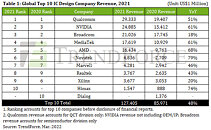
Lenovo Unveils New Consumer IdeaPads and Tabs for 2023
Today's consumers need more out of their personal technology to thrive in the world of hybrid work and learning. While portability and mobility are key, the other side of this reality is that the hybrid worker and student are spending less time in offices and classrooms, and more time at home. This evolving consumer behavior has inspired Lenovo's new personal devices designed for the modern family, including Lenovo's first 16-inch Chromebook, the new Lenovo IdeaPad 5i Chromebook, and two new additions to its premium Lenovo Tab P11 tablet lineup: the Lenovo Tab P11 (2nd Gen) and the decked-out Lenovo Tab P11 Pro (2nd Gen).
The sudden switch to remote work and learning two years ago quickly increased people's reliance on technology, but it also ushered in a new and improved wave of remote everything - fitness, concerts, cinema, cooking, even dance parties. People learned to do everything they used to go out for, right in their own homes using their technology. Signs point to those behaviors persisting past the pandemic as consumers plan to spend more time on hobbies like home improvement and many expressing intentions of cooking at home more.
The sudden switch to remote work and learning two years ago quickly increased people's reliance on technology, but it also ushered in a new and improved wave of remote everything - fitness, concerts, cinema, cooking, even dance parties. People learned to do everything they used to go out for, right in their own homes using their technology. Signs point to those behaviors persisting past the pandemic as consumers plan to spend more time on hobbies like home improvement and many expressing intentions of cooking at home more.















































